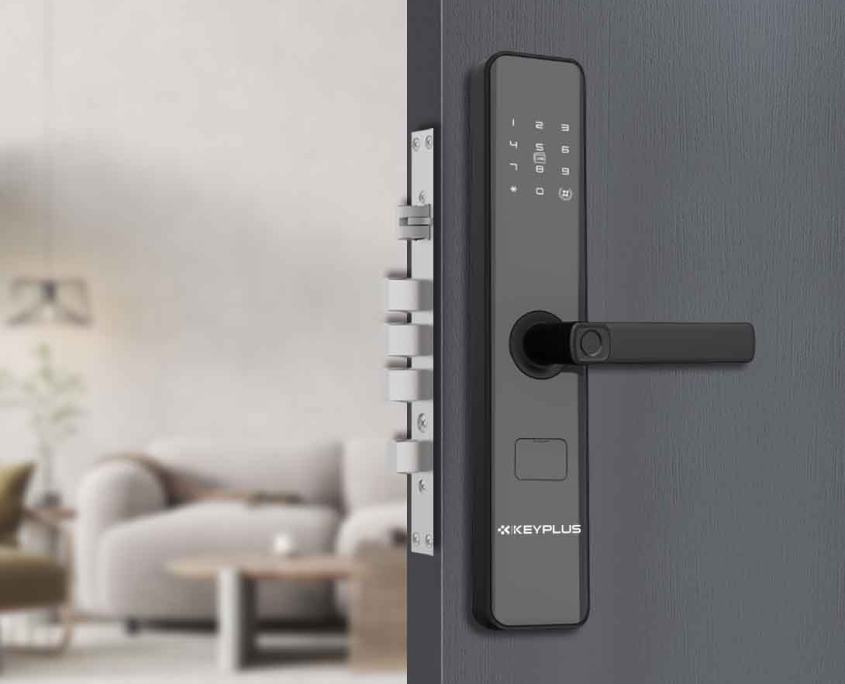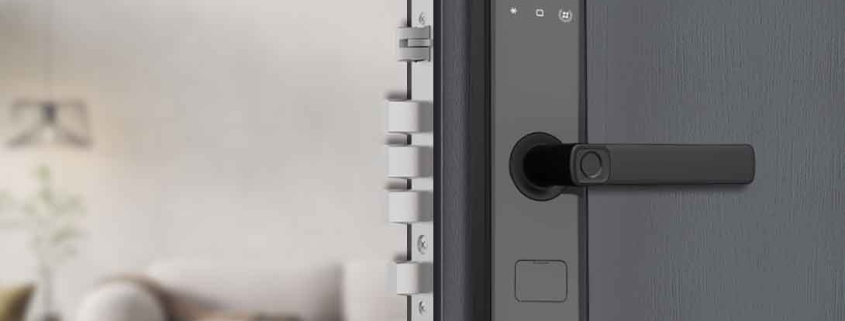What Is the Lifespan of a Digital Lock?
In an era where smart home technology is rapidly evolving, digital locks have become a popular choice for homeowners seeking convenience, security, and modern aesthetics. Unlike traditional mechanical locks, digital locks rely on electronic components, which raises an important question: How long do they last?
Understanding the lifespan of a digital lock is crucial for making an informed purchase and ensuring long-term security for your home. This article explores the average lifespan of digital locks, factors that influence their durability, and tips to maximize their longevity.
Average Lifespan of a Digital Lock
Most high-quality digital locks last between 5 to 10 years, depending on usage, maintenance, and environmental conditions. Some premium models with robust construction can even exceed a decade, while cheaper, low-quality locks may fail sooner.
Key Components and Their Lifespans
Digital locks consist of multiple parts, each with varying durability:
-
Electronic Keypad or Touchscreen – Typically lasts 5-7 years with regular use. Wear and tear from frequent pressing can degrade sensitivity over time.
-
Battery Compartment – Battery life varies, but most locks require replacements every 6-12 months. Corrosion from old batteries can damage contacts if not maintained.
-
Motorized Bolt Mechanism – The locking mechanism usually lasts 7-10 years, but heavy use (such as in commercial settings) can shorten its lifespan.
-
Circuit Board & Wiring – The internal electronics can last 8-10 years, but power surges or moisture exposure may cause premature failure.
-
Biometric Scanner (Fingerprint, Facial Recognition) – Advanced models with fingerprint sensors typically last 5-7 years before sensor accuracy declines.
Factors That Affect a Digital Lock’s Lifespan
Several variables influence how long your digital lock will remain functional:
1. Build Quality & Brand Reputation
Not all digital locks are created equal. Well-known brands like Keyplus use higher-grade materials and better engineering, leading to longer lifespans. Cheaper, no-name brands may cut corners on components, resulting in faster wear.
2. Frequency of Use
A digital lock on a front door in a busy household will wear out faster than one on a rarely used back door. Commercial locks in offices or apartment buildings may need replacement sooner due to constant use.
3. Weather & Environmental Conditions
Extreme temperatures, humidity, and direct sunlight can damage electronic components. Locks installed in:
-
Hot, sunny climates may suffer from UV damage or overheating.
-
Cold regions may experience battery drainage and condensation issues.
-
Coastal areas with salty air can corrode metal parts faster.
Weatherproof models with IP65 or higher ratings are more durable in harsh conditions.
4. Power Source & Battery Maintenance
Most digital locks run on AA or AAA batteries, while some have rechargeable options. Poor battery maintenance (leaving dead batteries inside, using low-quality brands) can lead to acid leaks, damaging the lock’s circuitry.
5. Software & Firmware Updates
Many smart locks connect to Wi-Fi or Bluetooth and require periodic updates. Manufacturers that stop supporting older models may leave them vulnerable to security flaws or compatibility issues, effectively shortening their useful life.
6. Physical Damage & Tampering
Attempted break-ins, accidental impacts, or improper installation can reduce a lock’s lifespan. Heavy-handed use (slamming the door, forcing the keypad) can also cause internal damage.

How to Extend the Life of Your Digital Lock
To get the most out of your digital lock, follow these best practices:
1. Choose a High-Quality Lock from a Reputable Brand
Investing in a well-reviewed lock from a trusted manufacturer ensures better durability and customer support.
2. Perform Regular Maintenance
-
Clean the keypad/sensor with a soft, dry cloth to prevent dirt buildup.
-
Check batteries every 3-6 months and replace them before they die.
-
Lubricate the bolt mechanism annually with graphite powder (avoid oil-based lubricants, which attract dust).
3. Protect It from Extreme Weather
-
Install a weatherproof cover if the lock is exposed to rain or direct sunlight.
-
In freezing climates, consider a low-temperature battery or a lock with an external power backup.
4. Keep Firmware Updated
For smart locks, enable automatic updates or check the manufacturer’s website periodically for security patches.
5. Avoid Excessive Force
Gently press buttons instead of jamming them, and ensure the door is properly aligned to prevent strain on the locking mechanism.
When Should You Replace Your Digital Lock?
Even with proper care, all digital locks will eventually need replacement. Watch for these signs:
Unresponsive Keypad or Sensor – If buttons don’t register or fingerprint scans frequently fail, the electronics may be deteriorating.
Frequent Battery Drain – Needing monthly battery changes could indicate a power leakage issue.
Strange Noises – Grinding or clicking sounds suggest motor or mechanical failure.
Software Becomes Obsolete – If the manufacturer no longer supports updates, your lock may become a security risk.
Visible Wear & Corrosion – Rust, cracks, or fading buttons mean the lock is nearing the end of its life.
Conclusion: Is a Digital Lock Worth It?
Despite having a shorter lifespan than traditional mechanical locks (which can last 20+ years), digital locks offer unmatched convenience, security features, and smart home integration. By choosing a high-quality model and maintaining it properly, you can ensure it serves you well for 5-10 years or more.
If you prioritize keyless entry, remote access, and advanced security, a digital lock is an excellent investment—just be prepared to replace it sooner than a standard deadbolt. For maximum longevity, opt for weather-resistant, brand-name models and follow the maintenance tips outlined above.
Final Tip: Consider a Hybrid Lock
Some modern locks combine electronic and mechanical key access, giving you the best of both worlds. If the electronics fail, you can still use a physical key, extending the lock’s usability.
By understanding the lifespan and care requirements of digital locks, you can make an informed decision and keep your home secure for years to come.



